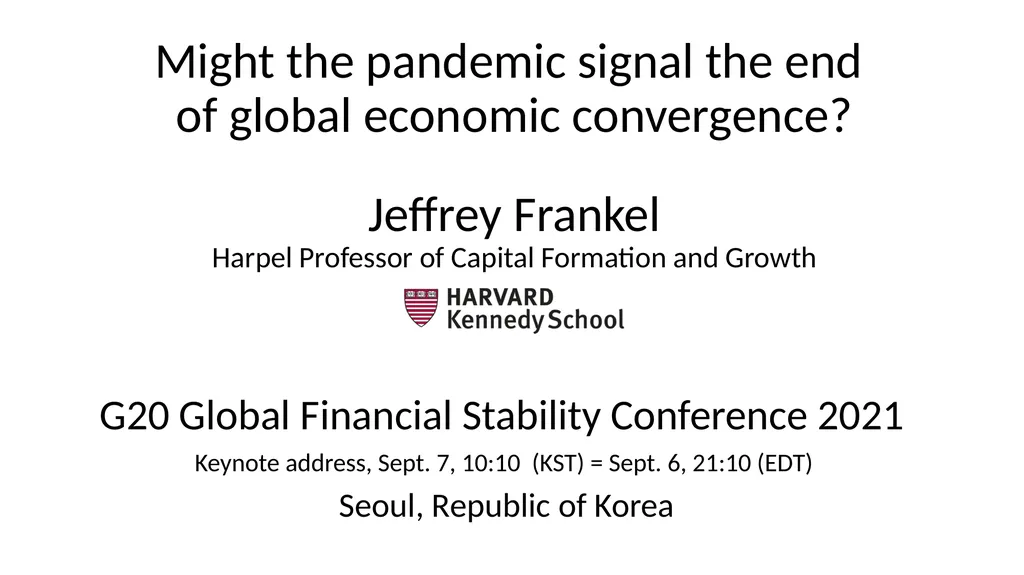
Might the pandemic signal the end of global
Author: aaron | Published: 2025-05-28
Description: Might the pandemic signal the end of global economic convergence? Jeffrey Frankel Harpel Professor of Capital Formation and Growth G20 Global Financial Stability Conference 2021 Keynote address, Sept. 7, 10:10 (KST) Sept. 6, 21:10 (EDT)
Download Presentation
Download the PPT/PDF: Download
Transcript:
Loading transcript…